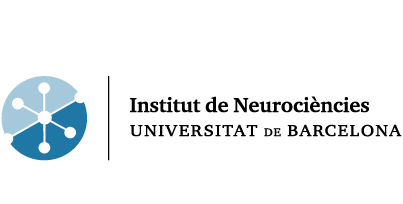
RAÚL ESTÉVEZ POVEDANO
Position: Professor agregat
Research team
Alejandro Barrallo Gimeno
Associate Professor
abarrallo (at) ub.edu
Carla Pérez Rius
Early stage researcher
carla.perez (at) ub.edu
Xabier Elorza Vidal
Early stage researcher
xabier.elorza (at) ub.edu
Sònia Sirisi Dolcet
Postdoctoral researcher
soniasirisi (at) ub.edu
Hector Gaitan Peñas
Administrative and technical staff
hgaitan (at) ub.edu
Contact details
Dr. Raúl Estévez Povedano
Department of Physiological Sciences II
Faculty of Medicine. Pavelló de Govern, Feixa Llarga, s/n
08907 L’Hospitalet de Llobregat (Spain)
+34 93 4039781
restevez (at) ub.edu
Research Interests
Chloride is the most abundant anion in organisms. Plasma membrane chloride channels from the CLC and LRRC8 family are important for several physiological functions such as regulation of excitability in nerve cells and muscle, for cell volume regulation as well as for transepithelial transport. The physiological roles of several chloride channels are illustrated by human inherited diseases caused by mutations in their genes or in auxiliary subunits that regulate their functions. Thus, defects in CLC and LRRC8 proteins have been related with hyperexcitability of skeletal muscle (myotonia, dystrophic myotonia, Hungtinton’s disease), salt loss in the kidney and deafness (Bartter’s syndrome), leukodystrophy (myelin alteration) with edema in the white matter or agammaglobulinaemia. Our aim is try to understand chloride channel regulation in order to provide therapeutical solutions to affected patients. We use a multidisciplinary approach by applying imaging, electrophysiology and biochemistry methods in rat, mice and zebrafish models.
Current Research Lines
- Molecular basis of megalencephalic leukoencephalopathy
- Regulation of astrocytic volume-regulated anion and osmolyte channels
- Modulation of glial ClC-2 chloride channel
- Structure and function of the skeletal muscle ClC-1 chloride channel
- Regulation of the kidney ClC-K/barttin chloride channel
Technologies / methods
- Molecular biology. Site-directed mutagenesis. RNAi. TALEN nucleases. CRISP. Adenoviruses. Lentiviruses. In vitro transcription. Generation of zebrafish KOs. Transgenic production. Studies of zebrafish animal models.
- Membrane protein biochemistry. Solubilization. Production of antibodies. Immunohistochemistry and immunofluorescence. Expression of proteins in Xenopus oocytes. Two-electrode voltage clamp. Imaging studies. Confocal.
- Methods to study protein-protein interactions: coIP, y2H, split-Ub Y2H, FRET, BRET, GLuc complementation, BiFC, split-TEV, PLA.
Highlighted publications
· Hoegg-Beiler MB, Sirisi S, Orozco IJ, Ferrer I, Hohensee S, Auberson M, Gödde K, Vilches C, de Heredia ML, Nunes V, Estévez R, Jentsch TJ. Disrupting MLC1 and GlialCAM and ClC-2 interactions in leukodystrophy entails glial chloride channel dysfunction. Nat Commun. 2014 Mar 19;5:3475.
· Jeworutzki E, López-Hernández T, Capdevila-Nortes X, Sirisi S, Bengtsson L, Montolio M, Zifarelli G, Arnedo T, Müller CS, Schulte U, Nunes V, Martínez A, Jentsch TJ, Gasull X, Pusch M, Estévez R. GlialCAM, a protein defective in a leukodystrophy, serves as a ClC-2 Cl(-) channel auxiliary subunit. Neuron. 2012 Mar 8;73(5):951-61.
· López-Hernández T, Ridder MC, Montolio M, Capdevila-Nortes X, Polder E, SirisiS, Duarri A, Schulte U, Fakler B, Nunes V, Scheper GC, Martínez A, Estévez R, van der Knaap MS. Mutant GlialCAM causes megalencephalic leukoencephalopathy withsubcortical cysts, benign familial macrocephaly, and macrocephaly with retardation and autism. Am J Hum Genet. 2011 Apr 8;88(4):422-32.
· Estévez R, Schroeder BC, Accardi A, Jentsch TJ, Pusch M. Conservation of chloride channel structure revealed by an inhibitor binding site in ClC-1. Neuron. 2003 Apr 10;38(1):47-59.
· Estévez R, Boettger T, Stein V, Birkenhäger R, Otto E, Hildebrandt F, Jentsch TJ. Barttin is a Cl- channel beta-subunit crucial for renal Cl- reabsorption and inner ear K+ secretion. Nature. 2001 Nov 29;414(6863):558-61.



